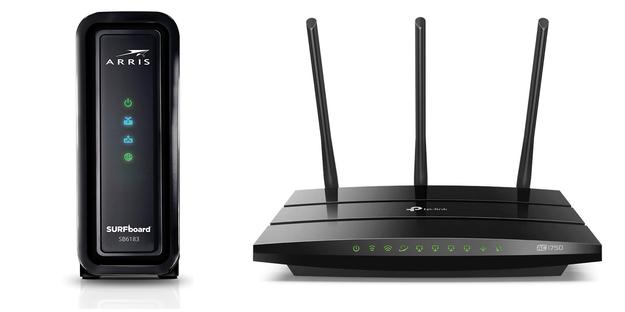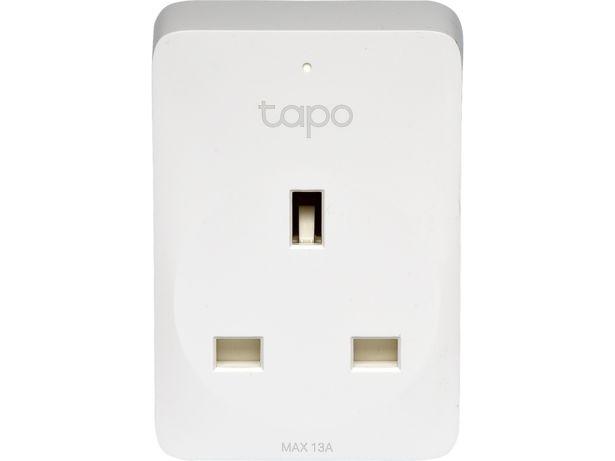Wireless Routers & Modems
Netgear connects best with Aussies in 2021 router review
Slow internet can be a struggle for many Australian households, with plenty of our favourite gadgets and services requiring a reliable connection to get the most out of them. But as much as we’d like to simply blame our providers for slow internet, it can sometimes be the modem itself that’s standing in the way of a good time. So, it’s best to know what you’re getting yourself into when it comes to selecting and using a router for your home, as it might save you some frustration down the line.
With plenty of brands and models available – and many internet providers bundling modems into their internet deals – narrowing down your options can be a buffering challenge. Add in all that industry jargon, and a modem can be a tough buy indeed. That’s why Canstar Blue produces an annual review of routers and modems to find out which are up to speed with Aussie customer satisfaction, and which are lagging behind the times.
Best Wireless Routers 2021
This year, over 500 Australian adults told us about their experiences with the big-name modem providers listed. The five included brands have been rated in the following order for overall satisfaction:
Taking out the top spot for 2021 is networking specialist Netgear, which scored an impressive five stars in almost every reviewed category, with the exception of value for money. It’s a tremendous result for the hardware brand, and a massive step up from last year’s fourth place ranking.
Rounding out our top three modem and router brands of 2021 are Telstra and last year’s winner iiNet, in second and third place respectively. This year also sees the inclusion of modems from popular manufacturers TP Link and D-Link.
Read on as we guide you through everything you need to know about routers and modems, and explain what the five brands in our review have on offer.
Top Wireless Routers in Australia
There are many brands and products out there, with some boasting similar-sounding names. This makes it difficult to find the wireless router that will be best for your needs.
A lot of internet providers will also give you a router when you sign up to a plan – often their own brand, or a re-branded one. However, the following five brands can generally be considered as some of the biggest of the bunch. Here is an overview of what’s on offer from each included brand.
Netgear
One of the best-known brands in the world of routers, Netgear has proved a popular option for many households, with the brand also commonly used by internet providers in bundled deals. Outside of telcos, its modems are readily available to buy outright through electronics retailers such as JB Hi-Fi, Officeworks and Harvey Norman.
Split into a number of model lines, the modem that will likely get you most excited is the ‘Nighthawk’ range, which includes a minimum of three antennas as well as VDSL and ADSL compatibility and combined wireless speeds of up to 10Gbps on $800+ models. However, cheaper options are available, with pricing beginning from around $79-$89 upfront.
Telstra
The biggest Australian telco to bundle internet plans with modem/routers, Telstra offers an easy-to-use Smart Modem Gen 2 with NBN, cable, and ADSL home broadband plans. This modem can be bundled in with eligible broadband plans, or bought outright from $216.
Telstra’s Smart Modem also comes with 4G mobile backup, meaning that in the event of a network issue you’ll automatically be connected to Telstra’s 4G mobile network. This modem also features four gigabit Ethernet ports and dual band capability, but if range is an issue in your household, Telstra also offers a Smart Wi-Fi Booster for added reception.
iiNet
One of two brands in this list that provides home internet plans as well as modems, iiNet may be a handy option if you don’t mind what type of router you get with your internet plan, or you don’t need a modem with all the bells and whistles. Depending on your broadband connection, you may be offered a modem free of charge when you stay connected for 24 months, or for an upfront fee.
iiNet has recently switched its main NBN modem option, and now provides a high-speed device with 4G connection backup, dual band Advanced WiFi 6 (5GHz and 2.4GHz),and four Gigabit Ethernet ports. If you’re not on an NBN plan, you can also pick up ready-to-go modems for FTTH, cable, FTTB, VDSL, home wireless broadband, and 5G home internet options.
TP Link
Offering models in either the Archer or TD range, TP Link provides options for all budget and usage needs, regardless of how internet-hungry your household is. The TD range is available in 300Mbps models and includes multi-functional USB ports and dual WAN ports, making it easy to use for both NBN and ADSL connections.
If you’re looking for something really serious, the Archer series might be more your speed, with most models having at least three antennas. This range is a little more expensive than the TD series, but does offer top-tier performance for bigger households and serious users.

D-Link
Offering a diverse range of modems and routers to suit all household sizes and budgets, D-Link modems can be purchased online via the D-Link website or just through your local electronics retailer. With range extenders and mobile broadband products also available, D-Link may be worth checking out regardless of whether you’re looking for a modem for your house, or something for on-the-go internet use.
While offering models for smaller households that don’t require a lot of firepower, D-Link also provides plenty for those looking to ‘go big’ on their routers. With the Cobra and Viper models certain to catch your eye with their design – as well as their tri-band Wi-Fi capabilities – they are also some of the more expensive models available on the market.
Aussies paying less for modems, but still relying on telco bundles
With over 500 of this year’s survey respondents having purchased a new router or modem in the last 24 months, it’s important not to overlook the impact picking the right hardware can have on your broadband experience. While some of us are shopping around for the best device for our home, 44% of survey participants received their modem as part of their internet plan. Only 8% bought their modem or router online, and a meagre 7% updated their modem to better support working or schooling from home during COVID-19 lockdowns.
41% of respondents agreed that their router provides enough range for their entire house, but only 7% use relays, extenders or wireless bridges to improve their WiFi range. With just 9% of respondents claiming to have researched routers before buying, and only 10% aware of the differences in router standards, there’s a huge knowledge gap among Australian broadband users that could mean many of us are missing out on getting the best performance from our internet plan.
On average, Australians spent around $50 on a new router in 2021 – that’s well over $100 less than the average $166 cost of a router in our 2020 survey. So if you do have the means to splurge, it may be worthwhile increasing your budget for a purchase that can take your NBN or broadband connection from average to outstanding.
Compare NBN Plans
Unlimited Premium Evening Speed (NBN 100) Plans
The following table shows a selection of published unlimited Premium Evening Speed (NBN 100) plans on Canstar Blue’s database, listed in order of monthly cost, from the lowest to highest, and then by alphabetical order of provider. Use our comparison tool above to see plans from a range of other providers. This is a selection of products with links to referral partners.
Unlimited Standard Plus Evening Speed (NBN 50) Plans
The following table shows a selection of published unlimited Standard Plus Evening Speed (NBN 50) plans on Canstar Blue’s database, listed in order of monthly cost, from lowest to highest, and then by alphabetical order of provider. Use our comparison tool above to see plans from a range of other providers. This is a selection of products with links to referral partners.
Unlimited Standard Evening Speed (NBN 25) Plans
The following table shows a selection of published unlimited Standard Evening Speed (NBN 25) plans on Canstar Blue’s database, listed in order of monthly cost, from the lowest to highest, and then by alphabetical order of provider. Use our comparison tool above to see plans from a range of other providers. This is a selection of products with links to referral partners.
Unlimited Basic Evening Speed (NBN 12) Plans
The following table shows a selection of published unlimited Basic Evening Speed (NBN 12) plans on Canstar Blue’s database, listed in order of monthly cost, from the lowest to highest, and then by alphabetical order of provider. Use our comparison tool above to see plans from a range of other providers. This is a selection of products with links to referral partners.
How does a wireless router work?
A wireless router connects your personal devices – such as mobile phones and tablets – wirelessly to the internet. This is done through the router acting as a ‘link in the chain’ of your home’s wireless network, with the wireless router forwarding IP packets from one network to another. That is to say, a router is a device that joins two networks together, in this case being the router to the internet, and your router to your devices.
Routers are also used to ‘daisy chain’ networks around your home. This is particularly useful if you need to get wireless internet signals into the farthest reaches of your home. This can get complicated and the signal can potentially get diluted the more ‘links in the chain’ you have, but wireless routers do present a convenient way to ‘route’ the internet around your home.
What makes a good router?
Many people just ‘plug and play’ with their router, but knowing about your router’s Wi-Fi standards and bands, classification and features are important for selecting a capable wireless router for your needs.
Wi-Fi standards and bands
You may have seen the various numbers and letters specifying your wireless router’s ‘standards’. Simply put, you should be looking out for routers with the standards of ‘802.11n’ or ‘802.11ac’. All standards are backwards and forwards compatible, but with data speeds increasing significantly since standards were introduced, it’s important to get a router with decent standards.
Higher-demand usage – like online gaming and downloading large files – is likely to need the 5GHz band, while lower-demand requests such as general browsing are likely shifted to the 2.4GHz band. This frees up the higher-speed band for those who need it.
Long story short, you should ideally be looking for a dual-band, 802.11ac wireless router at minimum. Failing that, an 802.11n router will do the job, and is the cheaper option if you’re on a budget –but be warned, any older standard and you run the risk of suffering from an inferior speed capacity.
Wi-Fi Classification
Beyond the standards stipulated above, there are a few other numbers and letters to look out for when buying a wireless router. You might have seen codes starting with an ‘AC’ or ‘N’, followed by a three or four-digit number – N600, AC1900 and so on. This is the Wi-Fi classification and it’s worth paying attention to it. The numbers stipulate, with dual-band routers, the combined speed of both bands, rounded to the nearest 100. For example, (stay with us) ‘AC1900’ roughly means a 600Mbps link speed using the 2.4GHz band, and 1300Mbps using the 5GHz band.
So, the next time you see one of these classifications when shopping for a wireless router, know that the number roughly translates to maximum link speeds, and the faster your internet has the potential to be.However, as with most technology-related things in life, it takes two to tango:
Your wireless router’s classification is an important figure to look at, but do keep in mind that buying big doesn’t always equal big value if your devices don’t have the same designation.
You may also be interested in:
Single-band Vs. Dual-band Modems
In a market full of numbers and abbreviations, it can be tough to figure it all out. But one of the main things that you should be focusing on when it comes to finding a modem is whether it’s a single-band or a dual-band model.
A single-band modem uses the 2.4GHz band and has only one wireless signal, while a dual-band modem uses both the 2.4GHz and 5GHz bands, allowing you to connect and use either wireless signal for your devices. Having two bands allows more devices to be connected without affecting the speed and strength of your internet (unless you’re connecting an army’s worth of phones and laptops).
As a result, single-band modems will suit smaller households who are looking for an affordable modem, or who don’t have a lot of devices to connect, while a dual-band modem will be suitable for most households, generally giving you a stronger signal strength and higher internet speed, although this will be dependent on your provider and plan.
Tri-band modems
In addition to single and dual-band modems, there are a number of brands that offer a tri-band modem, which, as the name implies, broadcasts three different signals. A tri-band modem will host one 2.4GHz signal, along with two 5GHz signals, in an effort to ensure you have a seamless internet connection, particularly if you have multiple people and devices using a 5GHz signal. As a result, tri-band modems are the most expensive modems you can purchase, and are generally only worthwhile for larger households, or those who have plenty of devices that need high-speed connections.
Wireless Router Features
Wireless routers generally vary in cost when they possess more bells and whistles and any nifty features. Features such as router range, connection quantities, security, and software designations – among other features – can all make or break a router experience.
Router Range
The irony of a 5GHz band is that it can actually reduce the range of your router, as the higher frequency is more susceptible to obstacles. To increase your chances of a fast connection, you’ll need both a compatible device and fewer obstacles for the band to contend with. 2.4GHz bandsare less susceptible to any obstructions and distance; however, with the two bands over the same distance and with no obstructions, the 5GHz one will be quicker.
While the 5GHz band may be great if your router is sitting directly in front of you, if you’re upstairs in another room surrounded by walls, while the router is downstairs in the kitchen, you might find yourself being connected to the 2.4GHz band more often. With only 42% of 2020’s survey respondents stating that their router has enough range for their entire house, buying a 5GHz wireless router may be a waste of money, though one with dual-band connectivity can still be a great investment.
Connections
Routers with an ‘N’ classification can support a maximum of 30 device connections, while ‘AC’ routers can support around 100. This is likely why the free Wi-Fi in public is so slow, as everyone is trying to connect and is overwhelming the wireless router. While 30 connections is probably more than enough for your household, if you’re running a small business with frequent clients and a few staff all trying to connect, you might find your wireless router in need of an upgrade.
Security and Software
Routers themselves act as a form of firewall simply by adding another ‘link in the chain’ for potential hackers and attacks to contend with. However, some routers offer additional security features, such as:
Other Features
Other features clearly fall under the ‘bells and whistles’ category. Some routers feature extra support for wireless printers, as well as various USB slots for plugging in any media drives that can be accessed by everyone on the network. Other features, such as gigabit LAN ports, are also handy for getting the best speed possible, to connect your device directly with the wireless router. Ideally, good routers should have multiple LAN ports. These are just some of the features you can expect, and generally the more you spend the more of these bells and whistles you can expect.
Wireless routers: The final link in the chain
No matter the brand of router, it pays to know a bit about the tech specs that are bandied about, as well as all the jargon related to speed and connectivity. Often, purchasing the most expensive wireless router out there isn’t always the best way to go, as you’ll need the latest devices to make the most of it.
It’s worth knowing a bit about your devices and if they can make the most of the latest technology, and then basing your wireless router purchasing decision from that. Chances are you could potentially save a few bucks in the process! Wireless router shopping can be a bit confusing, but with the right knowledge it can actually be a bit of fun, as well as ensuring that you can enjoy your next Netflix binge buffer-free.
About the author of this page
This page was written and is regularly updated by Canstar Blue’s Telco Editor, Tara Donnelly. Having spent over seven years writing for and editing telco comparison websites, she’s an expert in all things phone & internet, including wireless routers and how to find the best deal for your home. She loves to highlight the next best deals, while also flagging the things you need to be aware of. Tara also acts as a spokesperson for Canstar Blue.
Compare NBN Providers



